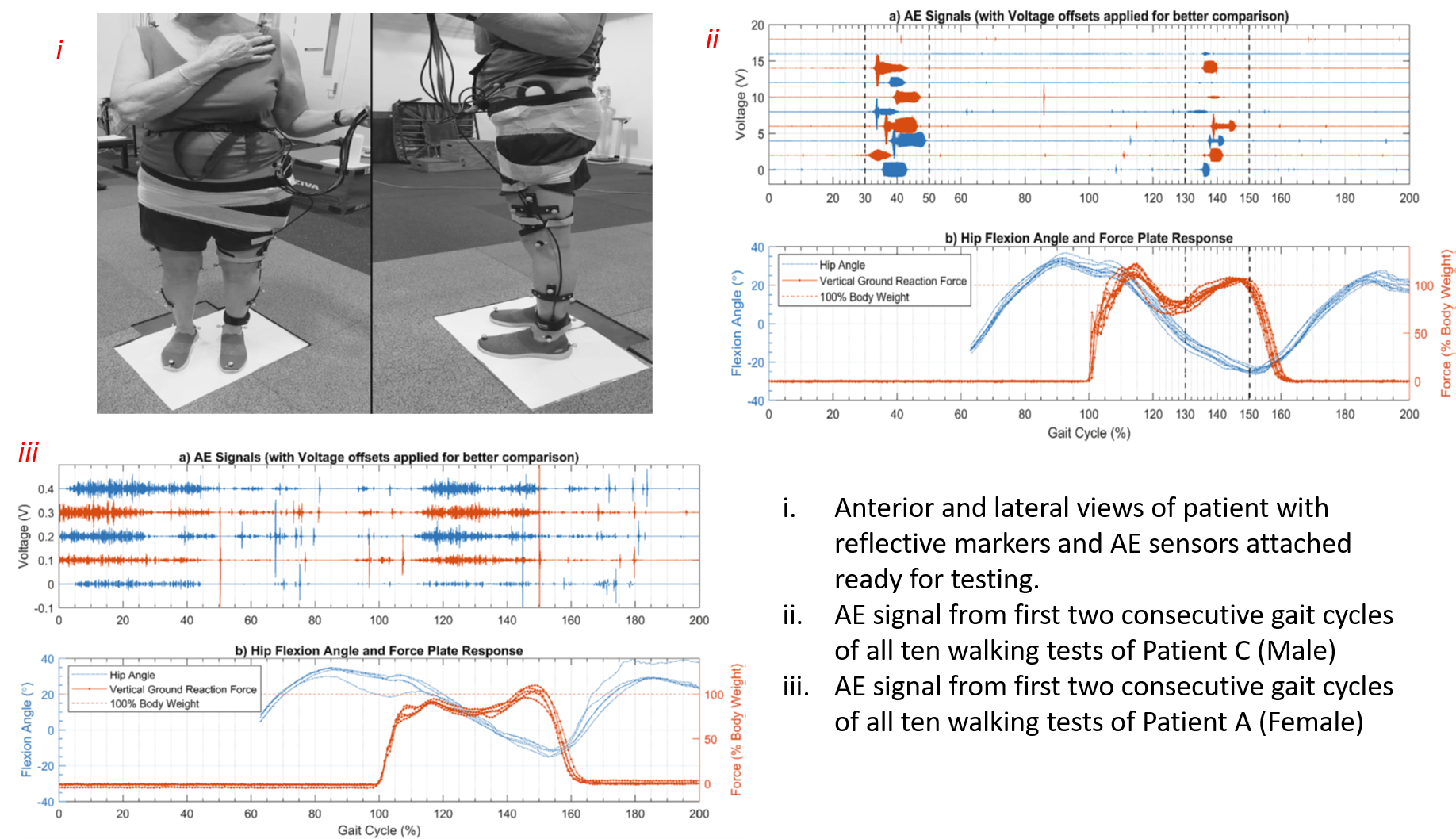For many years, joint replacement of damaged hips has been a standard treatment in orthopaedic surgery. There is currently no mechanism for early detection of implant failure following surgery. Early detection of total hip replacement (THR) failure could lead to more proactive surgical intervention and better patient outcomes. In this instance, the Acoustic Emission (AE) measuring approach may be a good fit as a diagnostic indication for joint health, implant failure modes, and gait analysis.
The previous study’s AE monitoring technique did not collect patient motion data, making it hard to make accurate comparisons between AE events and implant motions, or to determine whether specific AEs are caused by specific implant articulation angles, loads, or angular velocities. FitzPatrick et al. (2022) established a concurrent technique of AE monitoring to combine lower-limb motion and AE data to enable temporal interpretation of acoustic information for gait analysis to study this issue.
Three patients (two males and one female) between the ages of 50 and 70 were taken for a combined AE and gait analysis. They underwent a ceramic-on-ceramic implant bearing hip replacement. Four passive ultrasonic receivers set in a flexible array on the patient’s skin surface from the iliac crest to the upper femur were used to identify AEs. As the patient walked across the room in a straight line at a self-selected speed over a force plate, AE data were recorded. A motion analysis system with six infrared tracking cameras recorded the patient’s limb motions at the same time.
Their findings revealed that AEs are significantly linked to the stance phase of walking, when implant loads are high and the hip joint’s angular velocity is high. The key observation from the male patient was that all of the recorded squeaks happened between 30% and 50% of their individual gait cycle, which pertains to terminal stance, across all walking tests. Interestingly, the situation was significantly different for the female patient; total voltage magnitudes were lowered, and AEs of significant magnitude occurred consistently during the stance phase.
Based on current findings, the exact mechanism that causes implant squeaking is unknown. As a result, ongoing research aims to collect combined AE and gait data from more hip replacement patients in order to evaluate if the findings apply to a larger group of patients and to get greater insight into quantitative relationships between AE activity and hip joint dynamics.

This article was written by MM Raihan as part of an ongoing series of scientific communications written and curated by BioTrib’s Early Stage Researchers.
Raihan is researching In-situ Measurement of Nano-scale Wear Utilising Advanced Sensors at University of Leeds, UK.

